An ongoing study in the Affric Highlands rewilding landscape in Scotland has found that rewilding is having a positive impact on black grouse numbers. Collaborative efforts between local volunteers, estates, and other organisations offers hope that this iconic bird can bounce back after years of decline.
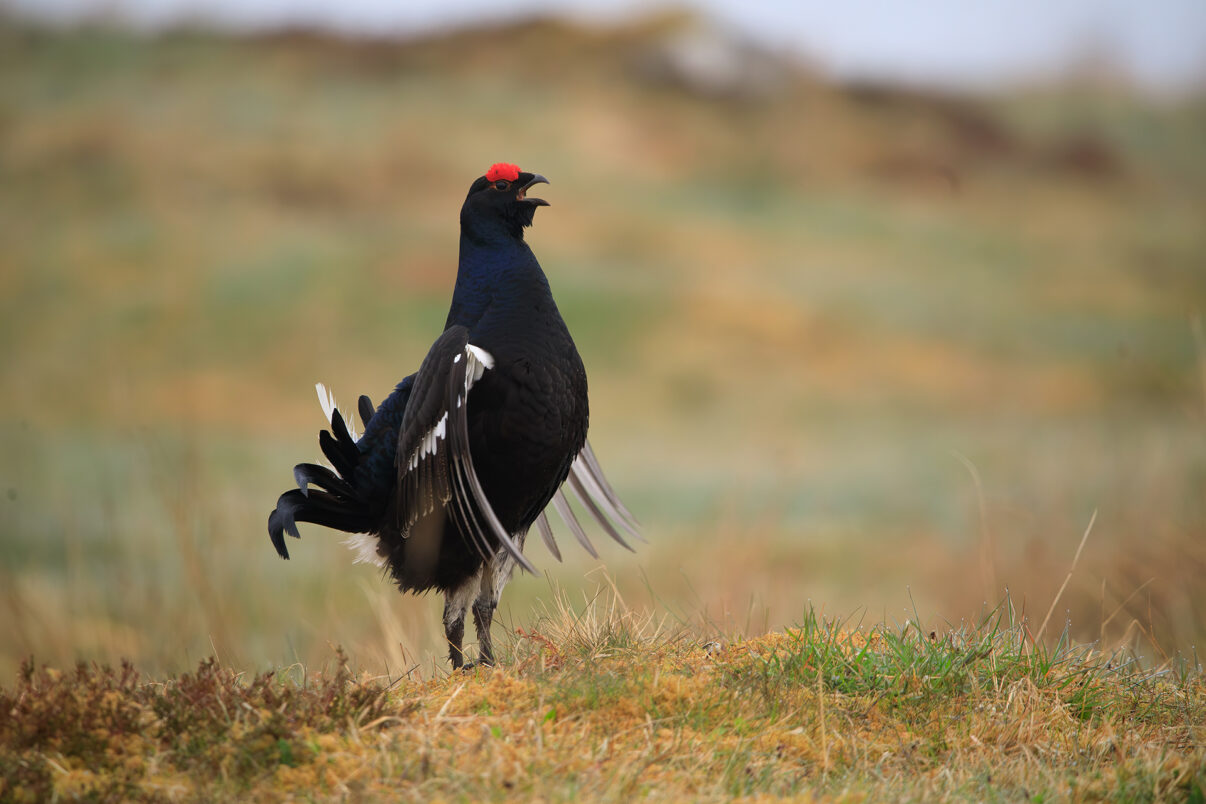
Good news for black grouse and wider nature
A new citizen science study being carried out in the Affric Highlands rewilding landscape in Scotland has found that rewilding efforts are having a positive impact on local black grouse numbers. The first year of the ongoing study found that populations of the birds are recovering well at multiple sites carrying out large-scale nature recovery across the landscape, which includes the restoration of native woods, peatlands, and wetlands.
A new community-focused programme of black grouse surveys was launched this year by the Affric Highlands rewilding team and RSPB Scotland, in collaboration with Forestry and Land Scotland (FLS) and local landowners. The study offers hope for the iconic yet endangered birds, as well as the wider recovery of biodiversity.
“Our initial findings are a cause for optimism,” says Nicola Williamson, a field officer with the Affric Highlands rewilding team. “Restoring the health of a mosaic of habitats appears to be offering much-needed hope for the black grouse – and for nature more broadly.”
Positive rewilding impact
Black grouse populations are measured by counting the numbers of males attending mating display sites called “leks”. Between April and May 2024, 14 sites in the Beauly area of the Affric Highlands rewilding landscape were assessed, with groups of trained volunteers each studying plots covering five square kilometres.
These surveys recorded 405 lekking males – a slight increase since the last survey in 2021, and the highest recorded over the past 17 years. The same survey sites have been monitored in previous years, with the same methodology. In 2007, 250 lekking males were counted. With black grouse numbers fluctuating over time, and historic data lacking for some years, future surveys carried out as part of the study will confirm whether this overall rise is steady.
Rewilding appears to be the key factor at sites where black grouse numbers were found to have increased. Excluding herbivores such as deer to reduce overgrazing and over-browsing, for example, is allowing habitats to recover through the growth of healthy shrub layers and young trees. The survey team found that numbers of lekking black grouse males have risen or declined – sometimes significantly – at different individual sites due to changes in available habitat.
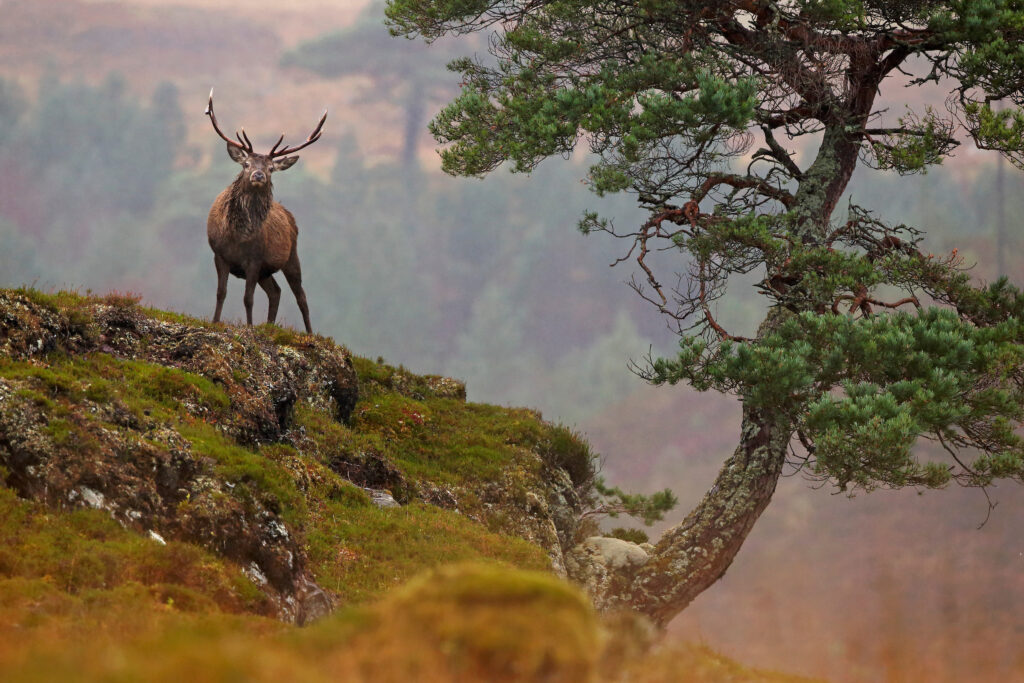
A collaborative effort
The black grouse study builds on previous surveys by RSPB Scotland in the Beauly area since 2007, and includes teams of volunteers for the first time. Study sites included the RSPB’s Corrimony Nature Reserve, several Forestry and Land Scotland sites – including one in Glen Affric, and the Dundreggan Estate in Glenmoriston, which is managed by Trees for Life – the local partner of the Affric Highlands rewilding team. Private farms and estates such as Corrimony Farm and Guisachan were also involved.
“The encouraging survey data provides welcome recognition of people’s hard work, and shows what can be achieved in a relatively short time,” says Alex Grigg, owner of the Guisachan Estate, which has been taking action for black grouse for several years, and is an active partner in the Affric Highlands rewilding initiative. “It’s also helpful for us to be able to see the bigger picture in terms of the context on neighbouring land.”
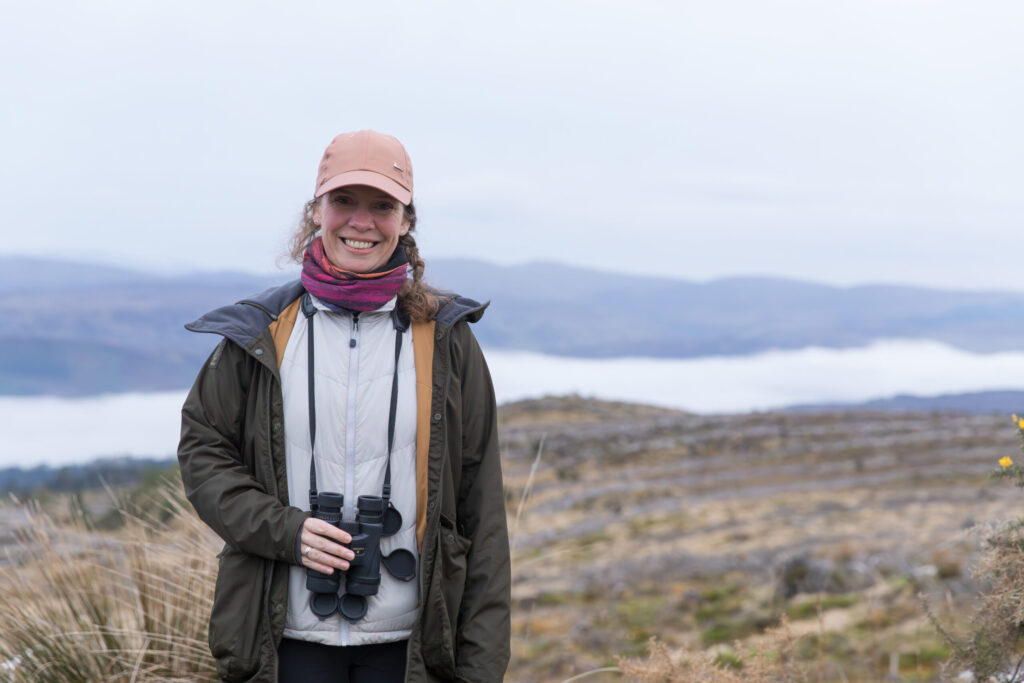
Scaling up
The findings of the black grouse survey are already leading some landowners to adopt more nature-positive management approaches. At several sites where black grouse populations have gone down, landowners are actively seeking advice and support to increase grouse numbers.
“The support from local volunteers, estates, and other organisations this year has inspired optimism that these birds will be well looked after moving forwards,” says Simon McLaughlin, RSPB Site Manager at the Corrimony and Glenborrodale Nature Reserves. “We hope to see even more of this community involvement going forward, as we continue collaborative efforts to safeguard this amazing species.”
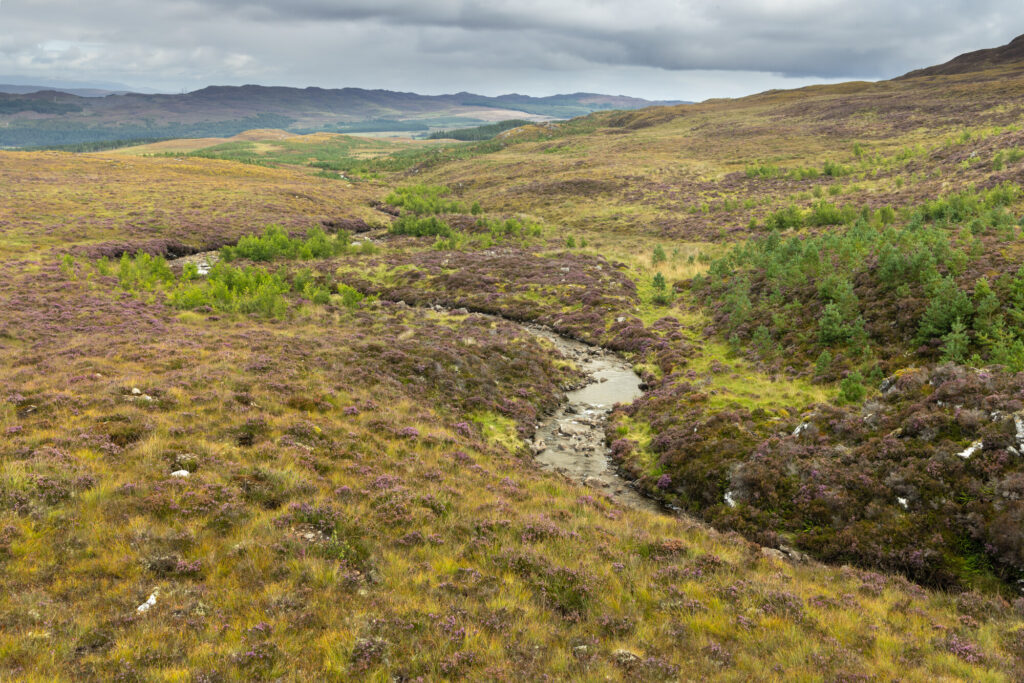
An endangered icon
The black grouse is a spectacular bird found across northern Europe, in mosaic habitats where areas of woodland, moorland, and grassland meet. While the females are cryptically-patterned to hide from predators when nesting, males are inky-black, with red wattles and a flamboyant, lyre-shaped tail. Black grouse leks, which take place throughout most of the year but peak in April and May, see males face up to each other in amazing displays.
In the UK, the black grouse is one of the country’s most rapidly declining bird species, with habitat loss and overgrazing resulting in a huge reduction in numbers and range. In the Scottish Highlands, land managed for the commercial hunting of species – such as red deer and red grouse – has reduced the mosaic of habitats on which black grouse depend. In the case of deer, this has also led to overgrazing and further degradation of the landscape. Mature commercial forestry plantations, with their closed canopy, are also unsuitable for the birds.
The last UK-wide survey of black grouse in 2005 estimated the UK population to be 5,100 males – with 3,400 in Scotland, 1,500 in England, and 200 in Wales.
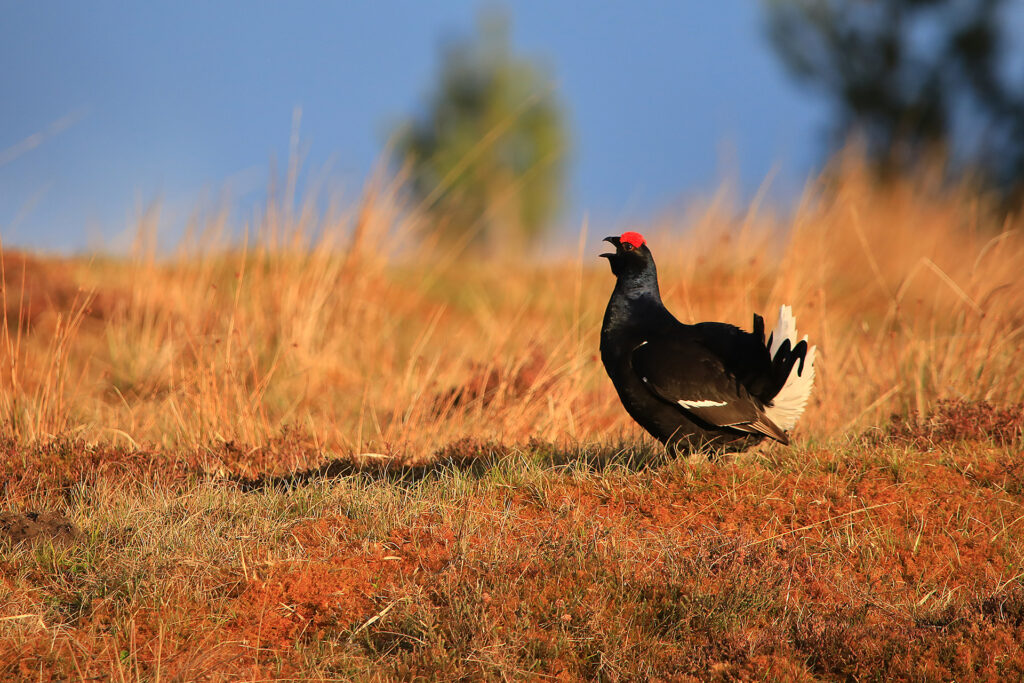
Towards a wilder Affric Highlands
Launched in 2021, the Affric Highlands is the UK’s largest rewilding landscape, with rewilding efforts led by the Rewilding Affric Highlands team and Trees for Life. The 30-year community-focused initiative – which aims to restore over 2000 square kilometres of habitat stretching from Loch Ness to the west coast of Scotland – will enhance biodiversity, address climate change, and support re-peopling and nature-based economic opportunities.
The formation of a broad coalition of partners – from landowners and entrepreneurs to students and community members – is helping to bring about lasting change and realise the rewilding vision for the landscape.
Training begins this autumn for next year’s season of black grouse surveys. The project team are keen to hear from potential volunteers and more landowners interested in getting involved. Please email info@affrichighlands.com or visit Trees for Life for more information.
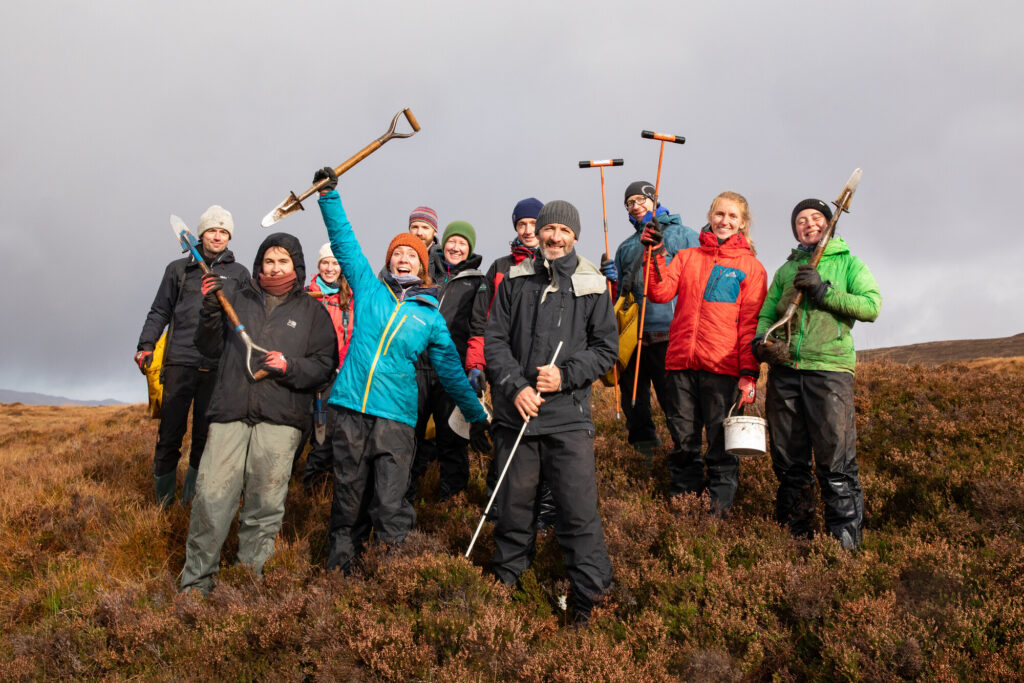
Invaluable support
Rewilding Europe’s work in our rewilding landscapes is supported by a wide range of highly valued partners. We would particularly like to acknowledge those providing core funding – notably the Ecological Restoration Fund, the Dutch Postcode Lottery, WWF-Netherlands, and Arcadia. Their longstanding support plays a critical role in enabling us to deliver and scale up rewilding impact.
